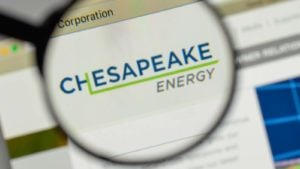Chesapeake Energy (NYSE:CHK) looked to be on the mend. From late November, the shares went from $0.57 to $0.95. But unfortunately, the gains proved to be temporary. Keep in mind the CHK stock is now at $0.52.

Even though the company is at penny-stock levels, the valuation on the equity is still close to $1 billion. It’s an indication that – through the years—the company has had to sell large amounts of equity to keep up its aggressive investments and acquisitions.
But as of now, it’s really tough to see long-term viability. The fact is that the company’s core business has continued to deteriorate, regardless of the various restructuring moves and financing strategies.
In other words, the best approach right now is to avoid CHK stock. The risks are just too major.
So let’s go deeper on why this is the case:
Adverse Market Conditions
Chesapeake is the pioneer of the fracking industry, which unlocked major energy supplies from fields that were once considered to be depleted. By 2008, the shares would be above $65. But this would represent the peak of the success. There would then be a long grinding decline.
For example, in 2013, Chesapeake founder and CEO Aubrey McClendon left the company because of allegations of fraud. He would eventually be indicated by a federal grand jury, after which he would die in a car accident.
As for the current CEO — Robert Douglas Lawler — he has certainly worked hard to find ways to get the company back on track, such as with a transition to the oil business. But the moves have not worked out.
In the meantime, the energy market has been under much pressure. Both crude oil and natural gas prices have slumped, making it extremely difficult for Chesapeake to generate positive cash flows. Even worse, fracking tends to see wells peak more quickly than traditional approach (one of the theories is that they are often placed too close to each other).
In the past six months or so, various large energy companies have been writing down the value of their fracking assets. They include Chevron (NYSE:CVX), which announced charges of $10 billion to $11 as well as BP (NYSE:BP), Repsol and Equinor, which have collectively written off a similar amount.
Weak Business
Late last year, Chesapeake was able to restructure some of its debt, which helped to alleviate the potential for a liquidity squeeze. But this was really a short-term move. The company still has a staggering debt load of $11.84 billion.
And yes, the credit agencies are getting concerned. In November, Moody’s analyst John Thieroff downgraded the debt to “speculative.” It would not be surprising to see other agencies make similar moves.
It’s true that Chesapeake can sell assets. But given the terrible market environment, it will be extremely tough to find buyers willing to pay premiums.
Secular Trends
No dobut, the oil and natural gas markets are prone to boom-bust cycles. But this begs the question: Could this time be different? That is, might we have a long-term decline?
This could very well be the case. The fact is that alternative energy sources are getting more cost competitive. They also offer other benefits like lower carbon emissions.
To get a sense of this, look at Plug Power (NASDAQ:PLUG). The company has seen a resurgence with its fuel-cell systems by focusing on the forklift industry. The company has been snagging large contracts from customers like Amazon (NASDAQ:AMZN), Walmart (NYSE:WMT), Procter & Gamble (NYSE:PG) and Home Depot (NYSE:HD). Consider that this market really appears to be a tipping point — and could be just one part of the renewables segment that will take away share from traditional sources.
Tom Taulli is the author of the book, Artificial Intelligence Basics: A Non-Technical Introduction. Follow him on Twitter at @ttaulli. As of this writing, he did not hold a position in any of the aforementioned securities.
